Cyathea cooperi is an Australian native Tree Fern, and one of it's common names is the Coin Spot Tree Fern. This is because of the marks left on the trunk of the plant after the fern fronds have dropped off. This is a large plant, growing up to around 6 metres high or more in sheltered, frost-free locations such as forests. it does'nt mind growing in full sun as long as it's roots are kept moist and well-drained, but it will also grow in shaded places. A few of these planted together create a tropical feel in the garden with their elegant long fronds creating a shady canopy. They are common in the Sydney area. These ones were growing in a harbourside reserve.
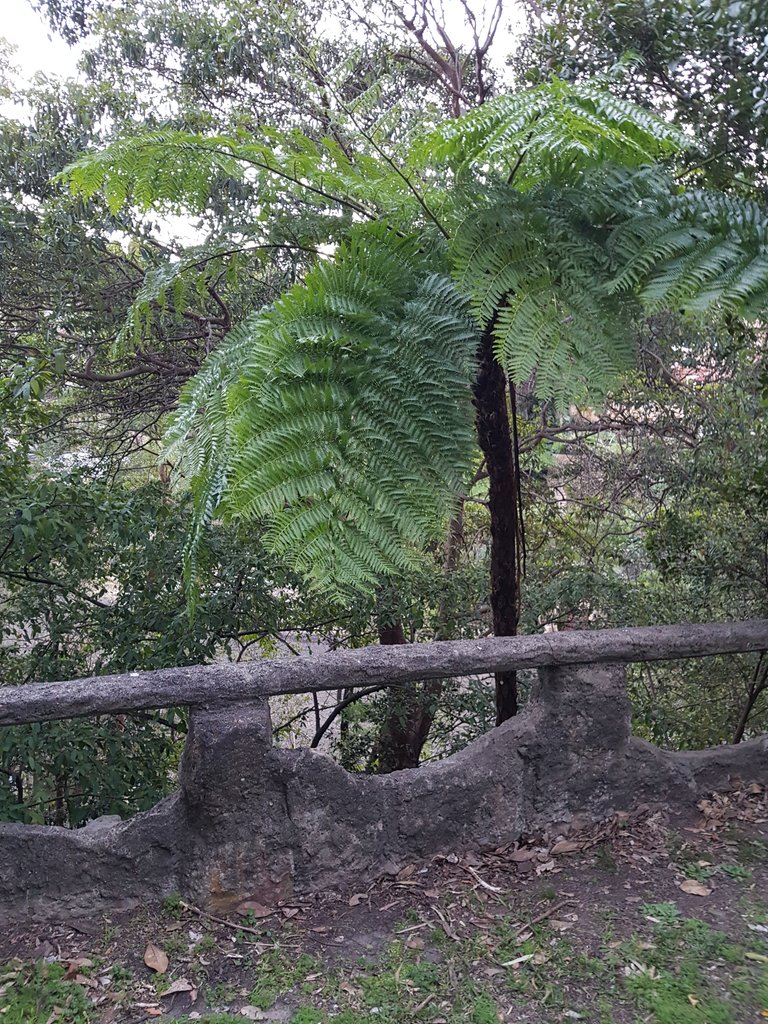
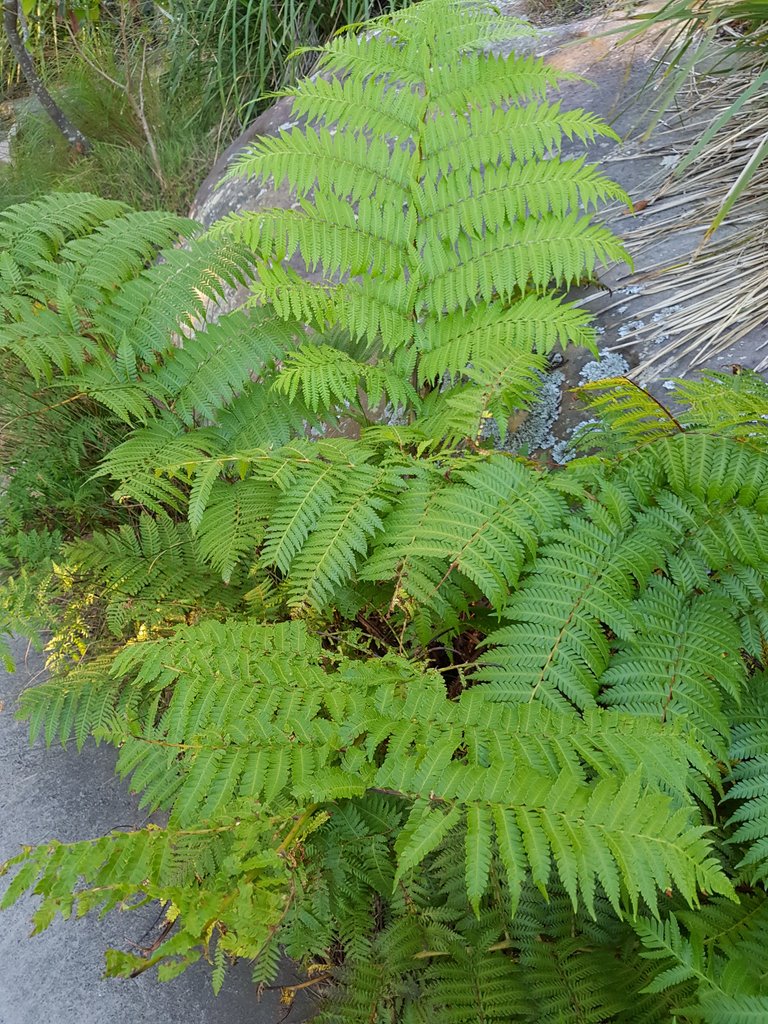
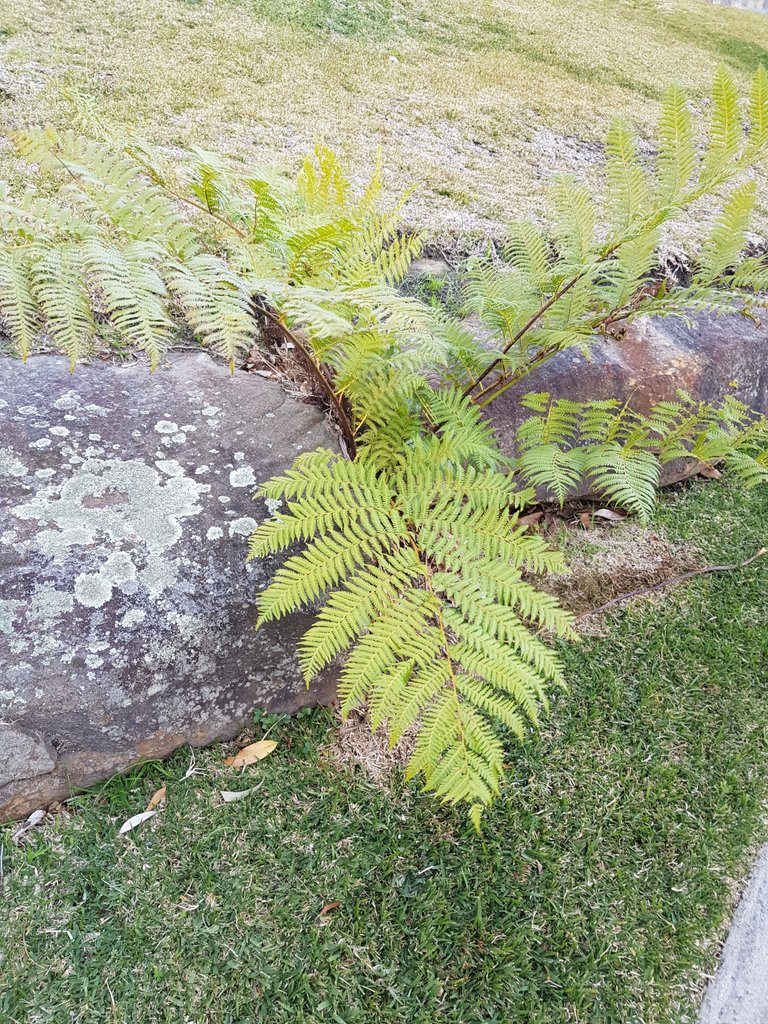
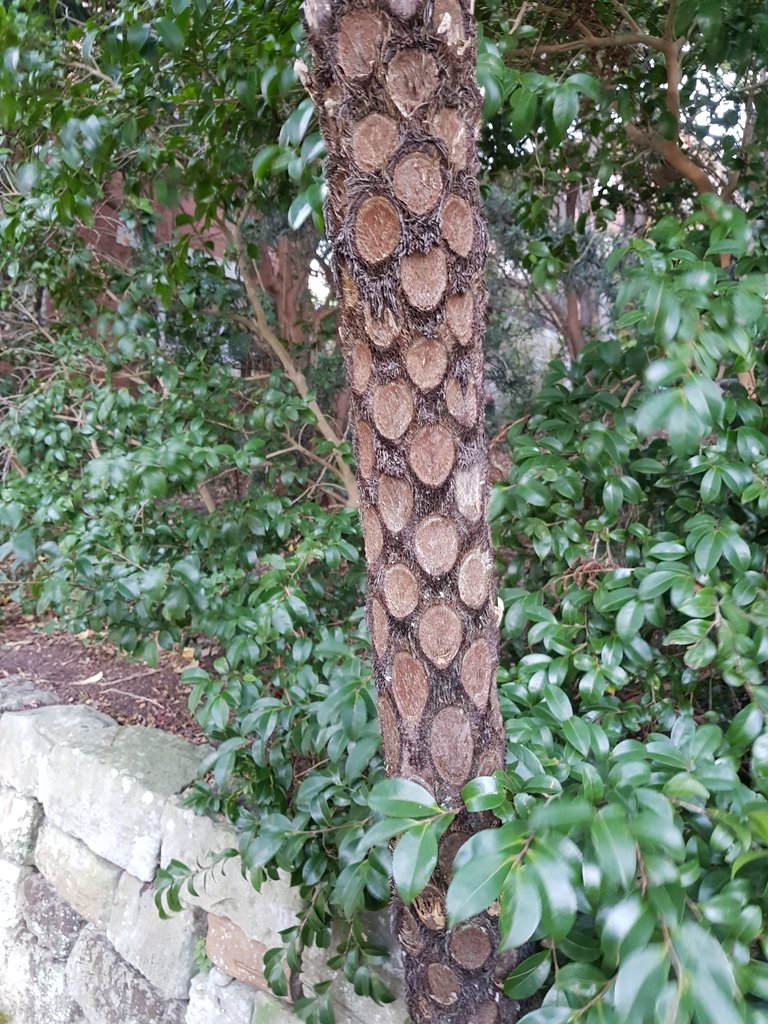

(Wonderful work sir)-:oin spot tree fern (Cyathea cooperi), sometimes called lacy tree fern, is a fast-growing, semi-hardy species of tree fern native to Australia. The fern thrives in the cool, moist environments found in Sunset's Climate Zones 15 to 24, where it will reach an ultimate height of 20 feet under ideal conditions. Coin spot tree ferns require little care once established if humidity is high and the soil is moist and rich. The ferns are somewhat susceptible to cold damage if temperatures drop below 20 degrees Fahrenheit, so it is best to grow them in a sheltered spot.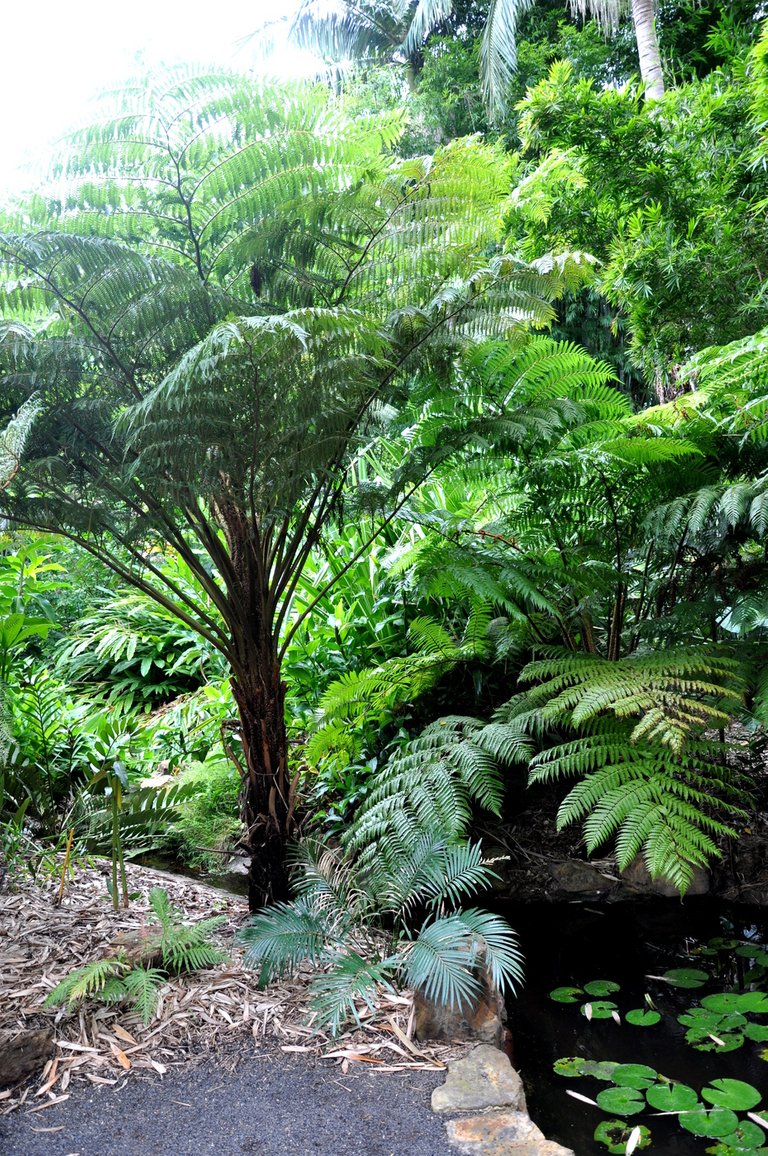



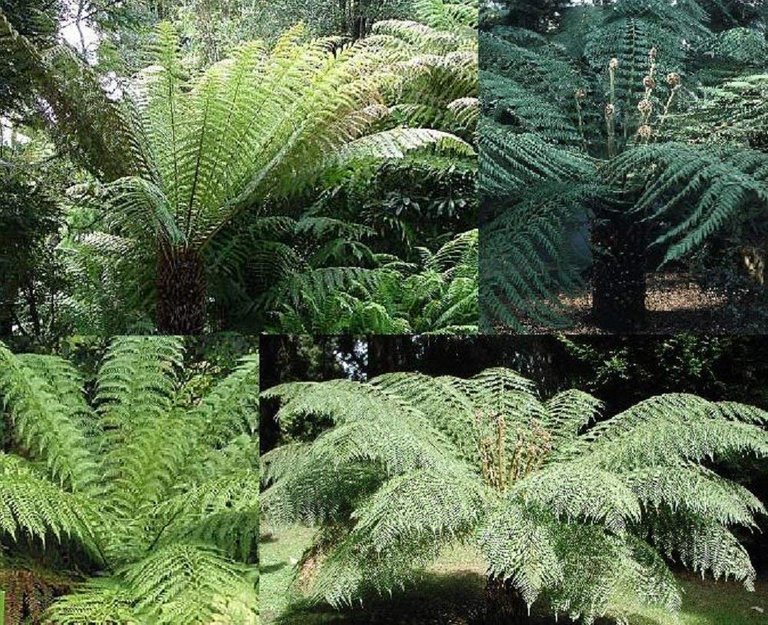
Water coin spot tree ferns deeply and regularly. Trickle a garden hose at the base of the plant for 10 to 15 minutes every seven to 10 days. Increase water to once every three to five days during periods of hot, dry weather.
Mist the foliage and trunk daily during the summer to keep it from turning brown. Use a garden hose with a mist nozzle. Spray mist into the air above the tree fern and let it rain down. Pay special attention to new, young fronds because they dry out easily.
Prune off and discard damaged, dry or dead fronds. Snip the frond off at its point of origin using pruning shears and place it in a green waste can. Do not compost or mulch fronds that have died for unknown reasons because they might harbor bacteria, fungi or other pests. Wear long sleeves when pruning the tree fern, because the hairs on the fronds can irritate the skin.
(Source)-:https://homeguides.sfgate.com/grow-coin-spot-tree-fern-25153.html.
Fav. comment Award !! Nice selection of Pics !
Coir peat is made from the outer husk of the coconut. It absorbs moisture and is great in sandy soils. It is also a waste product that is being put to good use. It also comes from struggling economies like Sri Lanka, that need the economic help. They soak it in water to remove excess salts and then dry it and bail it extremely compacted to efficiently freight.
You simply add water, break it up a bit once it softens, and then it is ready to use. It makes a beautiful mulch on top of the garden, or can be incorporated into the soil like I have done with this fern.
I shoveled the coir it into the hole, planted the fern and put more coir all around it. That should do the trick.
http://gardenworld.com.au/2013/01/10/planting-in-the-fernery-coin-spotted-tree-fern/
Coir peat is made from the outer husk of the coconut. It absorbs moisture and is great in sandy soils. It is also a waste product that is being put to good use. It also comes from struggling economies like Sri Lanka, that need the economic help. They soak it in water to remove excess salts and then dry it and bail it extremely compacted to efficiently freight.
You simply add water, break it up a bit once it softens, and then it is ready to use. It makes a beautiful mulch on top of the garden, or can be incorporated into the soil like I have done with this fern.
http://gardenworld.com.au/2013/01/10/planting-in-the-fernery-coin-spotted-tree-fern/
A beautiful umbrella from the rain. A wonderful tree, captivates from the first sight.
It seems to me that I saw them when I was in Australia, unfortunately my camera and photo cards are already in the container, but as soon as I get to them, I will check :)
Greetings :)
Excellent photos and a majestic plant, my friend and C. cooperi, the Lacy Tree Fern, derives this name from its delicate fronds. It is also known as the Australian Tree Fern as it is one of the most commonly grown Australian tree-ferns.
C. cooperi is quite distinctive from C. australis in that it has a more slender trunk with distinctive "coin spots" where old fronds have broken off the trunk. C. cooperi fronds are bright green and lacy and tend to be very fast growing. There are several major horticultural varieties of this fern including Cyathea ‘Brentwood’ which has paler fronds and scales and C. ‘Robusta’ which tends to be darker in both characters. C. cooperi is the one of the most popular tree ferns, along with Dicksonia antarctica due to its rapid growth form, hardiness and aesthetic appeal.
C. cooperi is naturally found in tropical lowlands, along the coast of Queensland and New South Wales.
Tree-ferns grow best in high humidity and high soil moisture conditions. It is therefore important to use good-quality mulches and to top them up regularly as this will not only keep the soil moist but also provide nutrients to the shallow root system. Tree-ferns usually respond well to organic fertilizers and well-rotted animal manures, C. cooperi especially as it tends to display particularly vigorous growth.
Though a wide range of pests attack ferns they rarely cause significant damage. If outbreaks do occur tree-ferns can be treated with the standard array of organic and non-organic pesticides. It has been found that the use of fertilizers can reduce a tree-ferns susceptibility to attack. Thus by providing adequate food, water and shelter you will be able to grow beautiful and healthy tree-ferns in your own garden!
Thank you @ctrl-alt-nwo
https://www.anbg.gov.au/gnp/interns-2003/cyathea-spp.html
Cyathea cooperi is a medium-to-large fast growing tree fern, to 15 metres (49 ft) in height with a 12-inch (30 cm) thick trunk.
The apex of the trunk and unfurling crosiers are particularly attractive, covered as they are with conspicuous long, silky, straw colored scales. The crown is widely spread and the light green fronds may reach a length of 4–6 metres (13–20 ft).
The Cyathea cooperi can also very rarely be found in the colour of a pale pink with an orange stripe going down the middle. This is extremely rare and can be worth about 2,000 dollars.
Cyathea cooperi is one of the most commonly cultivated tree ferns as an ornamental plant. It is used in gardens and public landscaping. It is hardy and easy to grow. Heavy frosts may kill the fronds, but plants recover quickly.
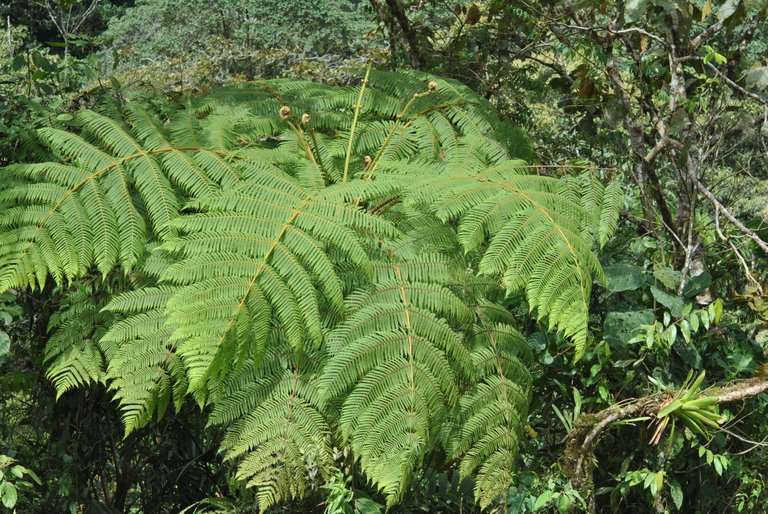
The plant prefers protected, shady moist conditions but can be grown in sunny areas. It does not do well in full sun and must be well watered.
source
General Description

Cooper's tree fern is a luscious, prehistoric-looking plant with magnificent large green fronds. This native of the coastal lowlands of eastern Australia loves moist friable soils and look its finest with high humidity and protection from cold or dry winds.
The amazingly large, triangular-shaped fronds are a beautiful light to medium green and can reach great lengths. Typically tree ferns grown outside of their native ranges have leaves that rarely reach any length beyond 8 ft/2.5 m., often much shorter. One of the most entertaining events in the life of a tree fern is the emergence and unfurling of new frond croziers, or fiddleheads.
Cooper's tree fern can tolerate full sun in areas with cooler summers, but in hot summer garden zones, it should have shade from the most intense midday sun. In fact, partial shade under a higher shade canopy produces elegant and lush fronds with ease.
If humidity is low, wetting the trunks and crown of the plant helps reduce leaf browning or slowing of new leaf emergence. Cultivar 'Brentwood' has leaves with a lighter green coloring, whereas 'Robusta' has darker green leaves. Take care to avoid getting any of the hairs of the trunk or frond stems on your skin or under your shirt, as they can lead to an unpleasant rash or at least an annoying and persistent need for itching.
source
Cyathea cooperi (Australian Tree Fern) - This is a fast growing tree fern that grows to 20 feet and spreads up to about 8 to 12 feet.
The finely divided fronds rise out of the trunk and arch down as they get older. Fuzzy brown and white scales cover the trunk and leaf stems. Plant in bright light (even tolerates full sun in coastal areas) in a well-drained soil and provide regular irrigation.
Irrigation can be applied to the trunk as well as the surrounding soil but avoid watering the crown as this enhances conditions that promote diseases such as Rhizoctonia or Tip Blight (Phyllosticta). Tip blight has become a more prevalent disease of tree ferns in southern California and seriously disfigures the new growth and older foliage.
Given optimum conditions this plant can grow several feet per year and reach 20 feet tall. It is hardy to about 20 degrees F. This description is based on our research and observations made of this plant as it grows in our nursery, in the nursery garden and in other gardens that we have visited.
We also try to incorporate comments received from others and appreciate getting feedback of any kind from those who have additional information about this plant, particularly if they disagree with what we have written or if they have additional cultural tips that would aid others in growing Cyathea cooperi.
source
Taxonomic name: Cyathea cooperi (Hook. ex F. Muell.) Domin
Synonyms: Alsophila australis R.Br. var. cervicalis F.M.Bailey, Alsophila australis R.Br. var. excelsa F.M.Bailey, Alsophila australis R.Br. var. pallida F.M.Bailey, Alsophila cooperi Hook. ex F.Muell., Alsophila excelsa R.Br. ex Endl. var. cooperi (Hook. ex F.Muell.) Domin, Cyathea australis (R.Br.) Domin var. pallida (F.M.Bailey) Domin, Cyathea australis (R.Br.)Domin var. cervicalis (F.M.Bailey) Domin, Cyathea brownii Domin var. cooperi (Hook. ex F.Muell.)Domin, Sphaeropteris cooperi (Hook. ex F. Muell.) R. M. Tryon
Common names: Australian tree fern (English), Cooper's cyathea, fanjan Australien (French), fougère arborescente d'Australia (French), lacy tree fern, scaly tree fern, straw tree fern (English)
Organism type: fern
Native to Queensland, Australia, Cyathea cooperi has invaded several islands in the Pacific. It is a fast growing fern that displaces native vegetation easily by forming dense stands. C. cooperi has become a problem in Hawaii by displacing its native ferns. It spreads its spores very easily by wind and proceeds to grow within a few weeks. It can grow up to 12m high and its fronds can grow up to 5m long.
Description
Cyathea cooperi can grow up to 12m in height (Wilson, 2007). The stipe base of Cyathea cooperi has two different types of scales. The first being dark, small scales and the other being large, pale, papery scales. The latter is the reason for the shaggy blond mat of scales that forms.
After the leaves die, the stipes will fall off at the trunk leaving oval scars (Medeiroset al, 1992). The sorus lacks an indisium and has a ring of small scales around the sporangia (Heenanet al, 1998). The fronds of C. cooperi can grow up to 5m long (Wilson, 2007). HEAR (2006) states, "Blades 2-pinnate-pinnatifid to 3-pinnate at base, green or light green above, paler below; rachises with dark brown, obtuse tubercles.
Pinnae up to 65 x 26cm. Pinnules stalked, tips acuminate. Ultimate segments deeply pinnatifid to 1-pinnate, segment lobes falcate, margins irregularly toothed or rarely deeply lobed. Veins 1-forked." In older Cyathea cooperi a tight rosette will form at the top of the trunk.
source
Australian Tree Fern, is a selected clone of the species Cyathea cooperi. Its growth is much faster than other tree ferns and can grow to be 15 feet tall in 10 years in the right growing conditions.
Along the lower California coast, for example, you may see 30 foot specimen trees with fronds 6 to 8 feet long. The trunk of this tree fern is formed from its roots, and so its advisable to water its trunk, as well as the soil.
Australian may be used as an annual for special effect in the garden in cold winter areas, but leave them in their containers and bring them in before freezes occur. These are very healthy plants with well established root system. Easy to grow ferns are one of natures most versatile, lush foliage plants.
The growth rate and leaf color of Australian Tree Fern will vary greatly depending on soil type, sunlight, temperature and other factors. A few leaves are often trimmed prior to shipping to reduce transpiration and travel stress.
source
Cyathea cooperi can grow up to 12m in height (Wilson, 2007). The stipe base of Cyathea cooperi has two different types of scales.
The first being dark, small scales and the other being large, pale, papery scales. The latter is the reason for the shaggy blond mat of scales that forms. After the leaves die, the stipes will fall off at the trunk leaving oval scars (Medeiroset al, 1992).
The sorus lacks an indisium and has a ring of small scales around the sporangia (Heenanet al, 1998). The fronds of C. cooperi can grow up to 5m long (Wilson, 2007).

HEAR (2006) states, "Blades 2-pinnate-pinnatifid to 3-pinnate at base, green or light green above, paler below; rachises with dark brown, obtuse tubercles. Pinnae up to 65 x 26cm.
Pinnules stalked, tips acuminate. Ultimate segments deeply pinnatifid to 1-pinnate, segment lobes falcate, margins irregularly toothed or rarely deeply lobed. Veins 1-forked." In older Cyathea cooperi a tight rosette will form at the top of the trunk (Large, 2005).
source
Cyathea Cooperi is an Australian native fern tree that is amazing.
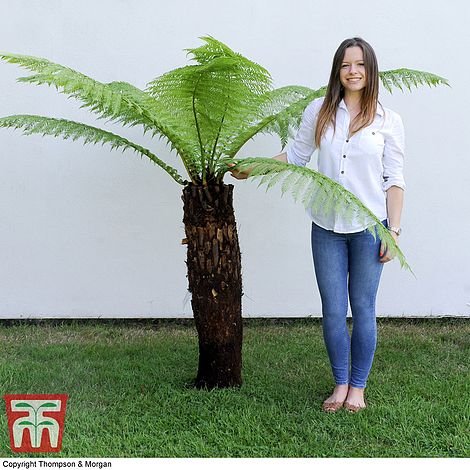
Details:
Condition:
Suitable for most moist soils in various positions. Prefer frost-free and humid environments. Will tolerate full sun if watered and treated properly.
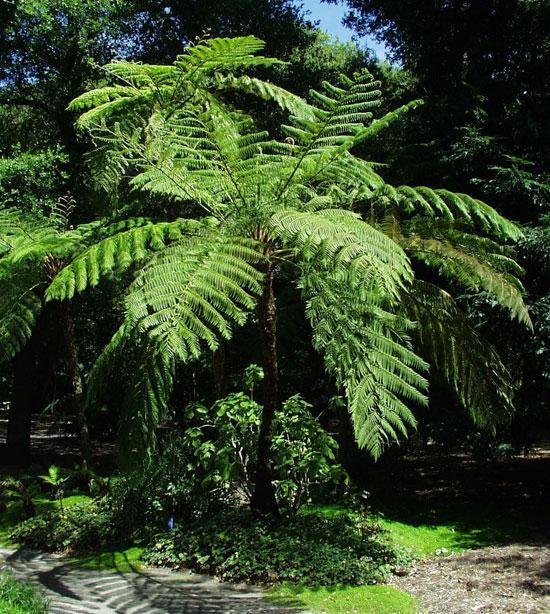
For Best Results:
Maintain moist soil and moisture with mist spray. Mulch well.
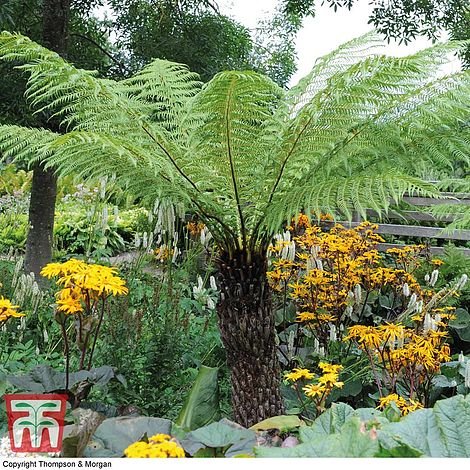
Planting Ideas and Uses:
Thank you! Hopefully a beautiful and pleasant day is always @ctrl-alt-nwo!
Source
Beautiful plant @ctrl-alt-nwo and this is probably the second most common treefern in cultivation after Dicksonia antarctica. It is well-known over much of the world and not difficult to find in areas where it is well adapted. Its popularity is probably a result of its great ease of growth and tolerance of neglect. It hails from eastern Australia, but does not grow at nearly such high elevations as Cyathea australis and Dicksonia antarctica do. The first common name is the one Americans have given it, without regard to the fact that there is a great number of treefern species from Australia. "Lacy treefern" is the Australian name, which refers to the texture of the fronds compared to Cyathea australis ("Rough treefern"). Not surprisingly, some variation occurs within this species, and as a result several named forms such as 'Brentwood', 'Emerald Beauty' and 'Kalgoorie Gold' are in cultivation.
In cultivation this species is often confused with Cyathea australis. If in doubt, it's probably C. cooperi, because there are far fewer C. australis in cultivation. The two are easily distinguished: C. cooperi, in most cases, has white and brown scales on the stipes, while C. australis has only the brown ones. C. australis also has spines at the bases of the stipes, and C. cooperi has a much more fleshy stipe than C. australis. There are also differences in their reproductive structures. The most important difference to many fern entusiasts is that C. australis is far more cold-hardy.
Cyathea cooperi has a slender trunk usually about 3 - 6" thick, sometimes growing to 30' high, and puts on growth very quickly. The fronds typically will reach about 8' long on a mature specimen, but, as with most tree ferns, they will be significantly stunted if kept in a pot. It will grow well in dappled (but not deep) shade, but also does well in some sun, even in hot climates, as long as the moisture supply is adequate. It also does relatively well in exposed, windy situations. These features make it a splendid treefern for a wide variety of sites.
Although Cyathea cooperi has been overwintered successfully in England and other cool climates, I do not generally tend to recommend it to gardeners in such locations unless they really want it for their collection, or it is the only species they can get hold of. It is not particularly cold-hardy; and the fronds will usually burn at about 27°F or so. Complete mortality generally occurs below 22°F, though some have recovered. It is, in fact, the least hardy species of Cyathea to which I have given a sub-page of its own (and I've done this only because it is such a well-known species). My reasoning is that if you are willing to go to the trouble of overwintering such a cold-tender treefern in a zone 8 or 9a climate, some equally hardy yet far more spectacular species such as C. brownii, C. howeana, and C. robusta are more worth your effort. C. cooperi grows very easily from spore.
http://www.angelfire.com/bc/eucalyptus/treeferns/cooperi.html
A fast-growing single trunked tall and elegant tree fern with long spreading fronds which creates a wonderful canopy. The Australian Tree Fern is sure to add a tropical rainforest feel to your garden.
Synonyms (AKA): 'Coin spot tree fern’ or ‘Scaly tree fern'
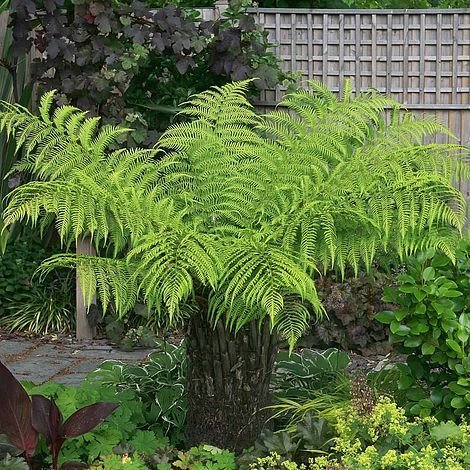
source
Typical height: 5 to 10m
Minimum temperature tolerance: Frost free
Climate: Prefers tropical or sub-tropical climates
Light conditions: Full sun to part shade
Growth habit: Single trunked, slender, upright
Growing conditions: Moist well drained soil
Origin: Australia (QLD, NSW)
source
Cyathea cooperi is endemic to the coastal areas of QLD and NSW, whereby it commonly grows along streams and gullies. It is naturally found in tropical lowlands, tropical and sub-tropical rainforest, and montane forest.
source
Cyathea cooperi is native to eastern Australia, but it thrives in many other places in the world where there are mild winter temperatures, dappled sunlight and plenty of moisture. It can also become invasive, particularly in tropical and warm temperate regions like Hawaii. The pale trunk, which can reach 30-40 feet, is marked with contiguous oval scars from older fronds. The pinnae or leaflets are divided several times, giving Cyathea cooperi its 'lacy' look. The new fronds or 'fiddleheads' are particularly beautiful, curled up with a delicate covering of silky hairs. They are often called 'crosiers,' as they resemble the staff bishops carry in religious ceremonies. The undersides of the mature fronds are covered with dusty brown sori aligned in rows. These sori protect the developing masses of dusty brown spores.
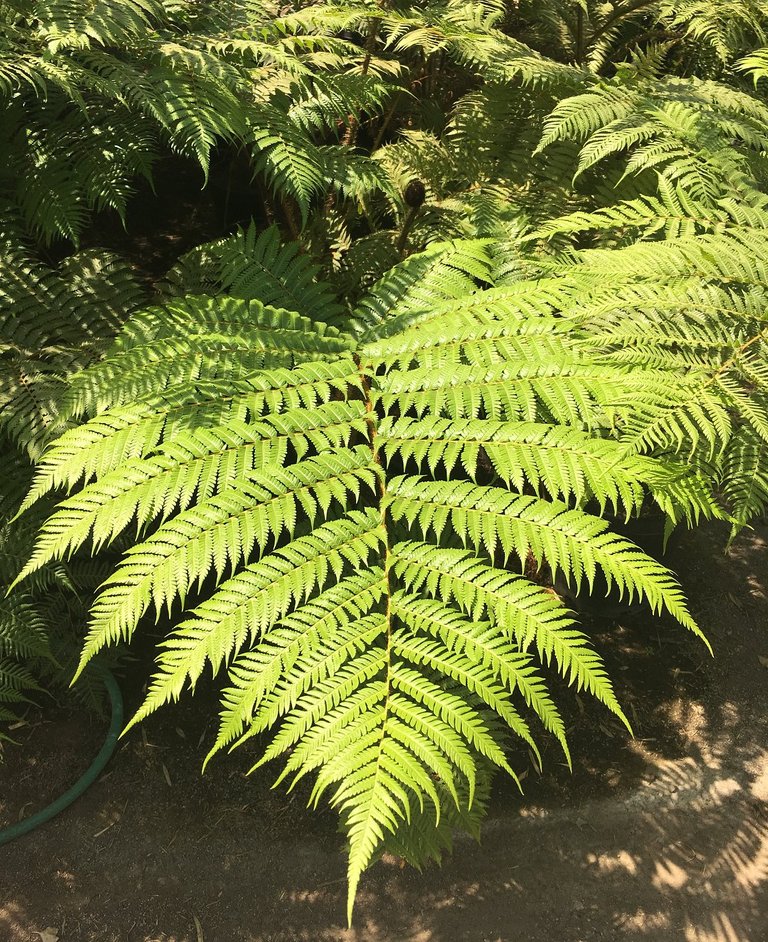
image source
image source
Dicksonia antarctica, native to Tasmania and eastern Australia, is also widely planted in the Park. It tolerates far lower temperatures than Cyathea cooperi. Its trunk is rough and covered with the broken off remnants of spent fronds. Look for both species in the Ancient Plant Garden and the Australia Collection alongside other species of tree ferns.
article source
Family
Cyatheaceae
Genus
Cyathea are evergreen tree ferns, but may be deciduous in cold areas, the rhizome forming an erect trunk clothed in fibrous roots, bearing large, pinnately-divided fronds with scaly stalks, in a rosette at the top
Details
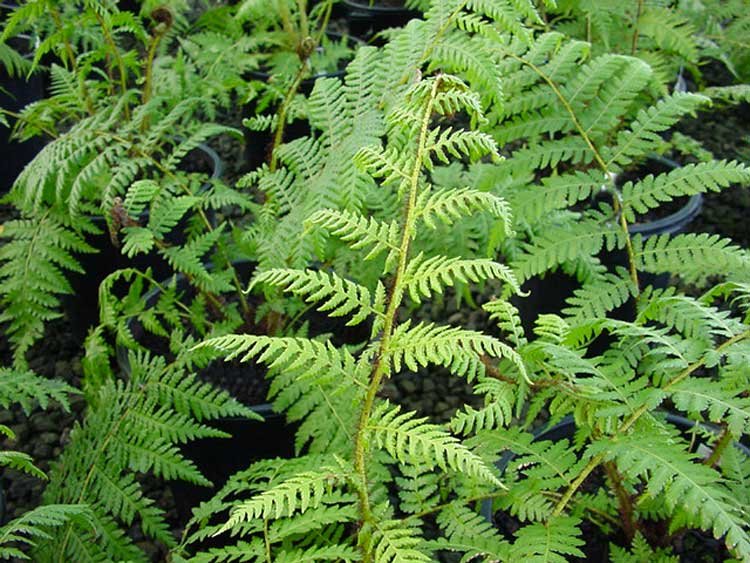
C. cooperi is a fast-growing tree fern reaching 5m in ideal conditions, with a slender stem and mid-green fronds up to 4m long.
Cultivation
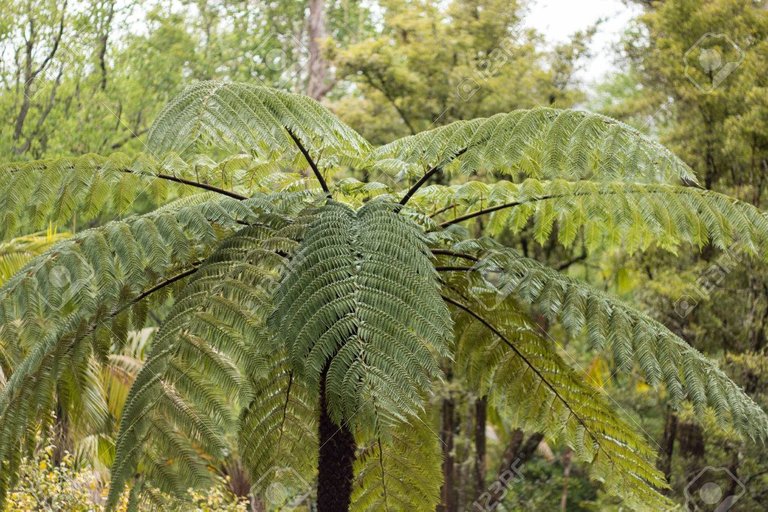
In areas prone to frost, grow in a container under glass with a minimum winter temperature of 10°C. The plant may be placed outside during the summer in a sheltered and partially-shaded spot. It requires a moist but well-drained, humus-rich soil; in hot, dry summers water the stem as well as the soil, but avoid watering the crown in winter.
How to care
Pruning
Dead or damaged fronds may be removed as necessary
Pests
Generally pest free outdoors
Content Source
The Australian Fern Tree is one of the remarkable ferns. Why? In its natural habitat in New South Wales and Queensland, this species can grow to a height of 15 meters.

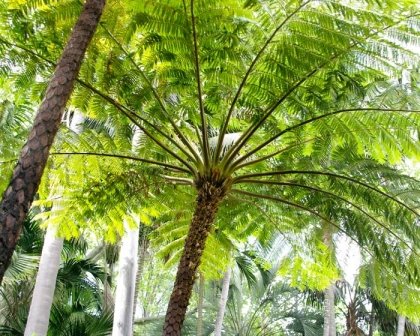


A lot of ice will kill the leaves, but the stem can have low temperatures and grow again after winter. However, at temperatures up to -10 degrees Celsius it is advisable to package the stem with foil or cloth to prevent damage. Provide a shady place.
Seed description:
Do not cover the spores and spread when sowing and cutting the soil in a warm and humid environment. The temperature must be at least 25 degrees Celsius and the soil does not have to dry. Germination is usually a month or 3, but it can also take longer. Regular spraying increases germination.
Planting time:
Throughout the year
https://www.google.co.id/url?sa=i&source=images&cd=&ved=2ahUKEwiNre3w-tPdAhXFT30KHTC7A14QjB16BAgBEAM&url=https%3A%2F%2Fwww.onszaden.nl%2Fcyathea_cooperi&psig=AOvVaw1WNA4bbMX7BZRez0E8QyI1&ust=1537889186476792
Thank you @ctrl-alt-nwo for
show amazing photos of interesting
plants and talk about them.
Today, thanks to you I learned about a new kind of wonderful Cyathea cooperi - Australian . I didn't even think ferns could be that big. We grow only such bushes.
source
It is always nice to learn something new and unusual about flora
and the fauna of our wonderful planet.
The tree trunk is very beautiful. And the plant itself is interesting.
C. cooperi is quite distinctive from C. australis in that it has a more slender trunk with distinctive "coin spots" where old fronds have broken off the trunk. C. cooperi fronds are bright green and lacy and tend to be very fast growing. There are several major horticultural varieties of this fern including Cyathea ‘Brentwood’ which has paler fronds and scales and C. ‘Robusta’ which tends to be darker in both characters. C. cooperi is the one of the most popular tree ferns, along with Dicksonia antarctica due to its rapid growth form, hardiness and aesthetic appeal.


image source
C. cooperi is naturally found in tropical lowlands, along the coast of Queensland and New South Wales.
image source
Tree-ferns grow best in high humidity and high soil moisture conditions. It is therefore important to use good-quality mulches and to top them up regularly as this will not only keep the soil moist but also provide nutrients to the shallow root system. Tree-ferns usually respond well to organic fertilizers and well-rotted animal manures, C. cooperi especially as it tends to display particularly vigorous growth.
content source
This majestic fern tree from Australia starts as a low and wide clump and spreads 6 feet a year.
The leaves are green with triangular lacy and leaf spreading of 8 to 15 feet. The leaves do not change color in the fall, and there is no flower or fruit.
Australian ferns can tolerate a variety of soil conditions including acids, sand, clay and clay, but prefer humus-rich moist soils.
Although these are plants that like shade in general, they can also develop in the shade of the medium to a full sun location, either exposed or protected.
Source:
https://www.google.co.id/url?sa=t&source=web&rct=j&url=http://www.bambooland.com.au/cyathea-cooperi-tree-fern~2806&ved=2ahUKEwjMppWz-9PdAhUab30KHa2cB0gQFjAEegQIAhAB&usg=AOvVaw3TmL8iS-SjvPQVxRTcbzsC
@ctrl-alt-nwo,
I think these plants are old and ancient! It's beautiful and well suited to shady garden! personally I like this tree! Coz I lke to have shady places around my garden!
Cheers~
Interesting message, again a lot of new. The brief description of the Australian paparatnik. The Australian fern, Cyathea cooperi, is a large tree fern growing at an altitude of 2-6 m. It is native to northeastern Australia, where it grows in forest fields and open places near the coast. The fern has become well developed and invasive in the Hawaiian Islands, where it penetrates into undisturbed tropical rain forests. It also easily colonizes bare places, landslides and other disturbed places. This rustic fern is a fast-growing and large plant with the possibility of changing its habitat and harming the ecosystem. It produces abundant disputes, scattered by wind and water, which can reach distant places far away from planted or already established people. The plant can form dense colonies that eventually replace local vegetation and threaten conservation species, such as the native fern Cibotium glaucum in Hawaii. This species is also included in the Global Invasive Species Database and is registered as invasive in Mauritius, where it competes with Cyathea excelsa and Cyathea borbonica.
https://translate.google.ru/translate?hl=ru&sl=en&u=https://www.cabi.org/isc/datasheet/17261&prev=search
Gigantic plant it is, 6m height is amazing if we know it is not a tree but a plant.
An amazing plant. It is very interesting to look at the fern's trunk, on which each trace recalls the predetermined period of his life. In many ways, it looks very symbolic.
I liked the bird's nest fern as if its dead leaves on its base is arranged to make it look like it was pasted on @ctrl-alt-nwo very beautiful on a tree.
I'll do the Birdsnest Fern soon.
Some great shots there living in nature completely awesome to check this out :D
Botanical Name: Cyathea cooperi
Common Names: Australian Tree Fern , Lacy Tree Fern , Rough Barked Tree Fern
Foliage Type: Evergreen
Native Yes
Plant Type: Fern
Plant Habit: Rosette, Upright Narrow
Description:
Popular, fast growing tree fern for warmer climates with a tall single trunk and deeply divided long lacy green fronds. Lacy bright green fronds grow 3-4 metres in length and attractive as they unfurl. The trunk is covered in light brown scales, marks from where old tree fronds have detached.
source
Although this fern can get 4 or 5 metres high in its native area of the tropical lowlands of coastal Queensland and NSW, I am hoping its grows a bit slower down here in Melbourne, but alas one day may get a bit tall. It will be much skinnier in the trunk than my other 2 ferns so will still look quite effective.
It is called a coin spotted fern because when the old fronds are gone, they leave little stumps that look like coins. Some people also refer to it as the Lacy tree fern after its fronds. I love the way this young plants fronds furl over in a large curve.
The name cooperi was named after Sir Daniel Cooper (1821-1902). He was an elected into one of Australia’s first parliaments and became the first ever Speaker of the Legislative Assembly.
Source: http://gardenworld.com.au/2013/01/10/planting-in-the-fernery-coin-spotted-tree-fern/
Coin spot tree fern (Cyathea cooperi), sometimes called lacy tree fern, is a fast-growing, semi-hardy species of tree fern native to Australia. The fern thrives in the cool, moist environments found in Sunset's Climate Zones 15 to 24, where it will reach an ultimate height of 20 feet under ideal conditions. Coin spot tree ferns require little care once established if humidity is high and the soil is moist and rich. The ferns are somewhat susceptible to cold damage if temperatures drop below 20 degrees Fahrenheit, so it is best to grow them in a sheltered spot.

Source
Source
Source
Coin spot tree ferns will grow in full sun in Sunset's Climate Zones 15 to 17 if you protect them from drying winds and salt spray, but partial shade during the hottest part of the day is best.
Source
Shared on twitter promoting good quality content on #Steemit. Stephen
#Promo-Steem #steemtalent #JoinSteemit #Steemit
Coin Spot Tree Fern. #STEEM #steemtalent #JoinSteemit #Steemit @Steemit
#GardenersWorld #Gardening #Plants #Photographer #Blogging #Blogger #Photography
Thanks for promoting the blog !
Coin spot tree fern (Cyathea cooperi), sometimes called lacy tree fern, is a fast-growing, semi-hardy species of tree fern native to Australia. The fern thrives in the cool, moist environments found in Sunset's Climate Zones 15 to 24, where it will reach an ultimate height of 20 feet under ideal conditions. Coin spot tree ferns require little care once established if humidity is high and the soil is moist and rich. The ferns are somewhat susceptible to cold damage if temperatures drop below 20 degrees Fahrenheit, so it is best to grow them in a sheltered spot. Grow coin spot tree ferns in a sheltered bed with dappled shade and moist, mildly acidic, free-draining soil. Amend the soil with a 6-inch-thick layer of well-rotted manure worked into the soil at a depth of 15 inches.water it regularly. pCoin spot tree ferns will grow in full sun in Sunset's Climate Zones 15 to 17 if you protect them from drying winds and salt spray, but partial shade during the hottest part of the day is best.

Thanks for the post
I have ferns in the country - it's an expensive pleasure. It was very interesting to know that you can meet a whole forest of paportnikov. Here is my story. Cyathea cooperi (Australian fern)
A fast growing single channel tall and elegant wooden fern with long spreading leaves that creates a perfect canopy. Cyathea cooperi is endemic to the coastal areas of QLD and NSW, so it usually grows along creeks and ravines. It, naturally, occurs in tropical lowlands, tropical and subtropical tropical forests and mountain forests.
http://www.bambooland.com.au/cyathea-cooperi-tree-fern~2806
Crazy fern! Too big and long! Next it will crawl all over the place and start catching people for food! Just like in the horror film! These must have come from the time of the dinosaurs!
Cheers.
Posted using Partiko iOS
Haha don't worry they are not Triffids ! Yes, similar plants were around in the time of Dinosaurs.
Features
The Australian tree fern creates an instant tropical feel in the landscape. It’s a fast grower and will quickly assume the size of a small tree in frost-free climates. Give it plenty of space so the elegant, lacy fronds can be fully enjoyed.
Uses
A wonderful specimen plant in the landscape. Excellent in large containers on the patio or deck. Smaller potted plants can be grown indoors in a bright location.
source
I love these Fern Trees and they are everywhere. Nice photos.